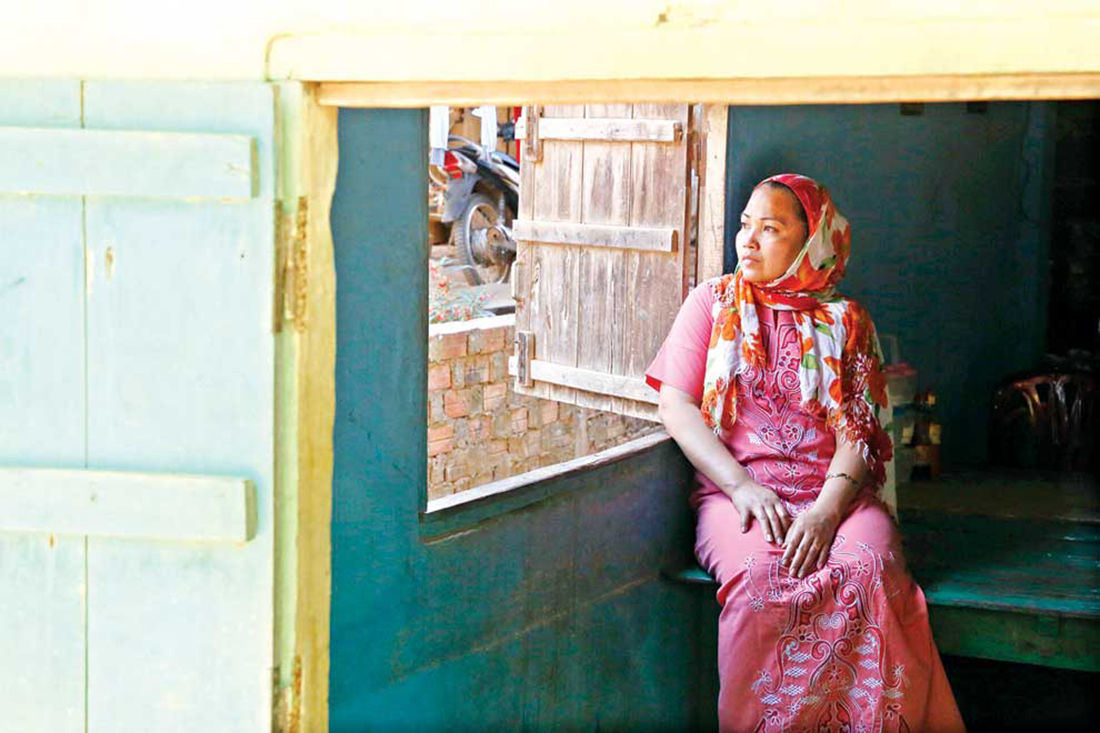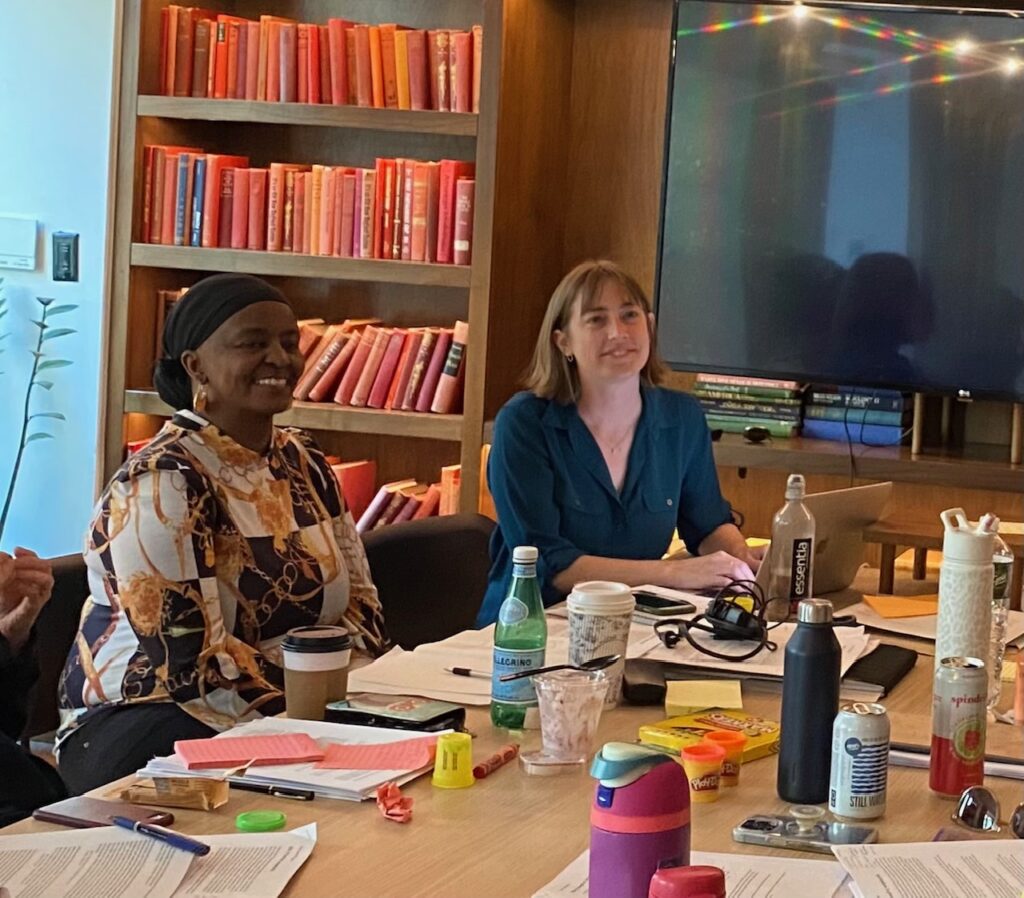Making Cities Safe for Women

All too often, for women all over the globe, cities are geographies of fear. Teeming, unlit boulevards, abandoned backstreets, overcrowded public transport, and faulty public infrastructure combine to make unsafe for women the urban enclaves where more than half the world’s women reside.
Indeed, the filthy public toilets, rickety, slosh-filled public stairways, broken elevators, and poor signage would seem almost a formula for making women ill at ease in the public square. Simply getting to work and home can be life-threatening, and navigating the city safely, affordably, and efficiently with a walker, stroller or multiple children is just about impossible.
This isn’t new, and the men in power in local government aren’t paying attention. Nor are the legions of (mostly male) planners, architects, engineers, and designers hired to help “improve” downtowns.
But women themselves have been stepping up.
Women garment workers in Phnom Penh, Cambodia, have joined a woman-led independent union, CATU, to advocate for fair labor practices and protections of their rights. As part of a training program organized by the Center for Alliance of Labor and Human Rights (CENTRAL), a number of the women created a map that, at a glance, informs their sister workers, many of them newcomers to the city, of the safest paths to work, markets, clinics, and home.
Self-education on safety is also key to the work of the American non-profit Population Council, which helps at-risk girls and young women in dangerous cities, from Freetown to Cairo, conduct “community resource scans” and “community mapping exercises”, mapping the social and geographic features of a given community. The young women chart out safe or dangerous paths to where they need to go, creating an invaluable tool for non-profits or local governments hoping to situate community assets in reliably safe destinations.
Most local governments, strapped for funds, play deaf or pay lip service to local women’s pleas for safer cities, which naturally have significant budget implications. But sometimes, grassroots organizations succeed in compelling government to do its job to protect the local population. Mahila Mahan (Women Together), a remarkable federation of savings groups formed decades ago in Mumbai by women pavement dwellers, worked with the women-led Society for the Promotion of Area Resources (SPARC) to persuade the local police department to locate police units in the slums, and to staff those units with officers vetted by resident committees organized by the women.
Other local governments have taken the lead in remarkable, path-blazing ways.
The City of San Francisco, which established its Department on the Status of Women 43 years ago, conducts periodic gender analyses of a dozen city government departments, ranging from adult and juvenile probation to non-traditional employment to public works. The analyses focus on hiring and workplace protections, service delivery, and equitable budget allocation. The department also consults routinely with local citizens to understand the specific needs of girls and women and other vulnerable communities. The city’s heightened levels of investment — in improved street lighting, curb cuts (the slopes from sidewalk to street that make it possible for strollers and wheelchairs to move easily), more shelter beds for victims of sexual assault and domestic violence, and training for police in handling the victims of human trafficking — are positive outcomes of these process, reflecting local government’s commitment to serving the needs of all its citizens.
In Curridabat, Costa Rica, when mothers in a gang-riddled neighborhood expressed concern about their children getting to school safely, it was the mayor who reached out to Asia Initiatives, a US-based non-profit and a WomenStrong International partner that has developed a social capital currency and trading framework called Social Capital Credits, or SoCCs. The women earn credits by keeping a crime-deterring watch on the street in the early mornings and at dusk. Asia Initiatives trained the women and city officials to run the program, which is now operated by the women themselves and administered out of the mayor’s office, with no further need for external support.
Seoul, South Korea, boasts of one of the most comprehensive programs to-date to combat violence against women. Alarmed by a persistent spike in sexual assault against women nationwide — with a 70% annual increase in reported cases for five years running — authorities in the national capital resolved to take action. Partnering with a women’s university, NGOs, and other government agencies, city officials conducted a series of focus groups and 130 victim interviews to understand the problem and solicit citizens’ suggested solutions. Sexual crime data were reviewed, to learn more about the ages of victims, their relationships with their offenders, and when and where sexual assaults were most likely to take place.
On the basis of this research, the city came up with a “Comprehensive Plan for the Prevention of Sexual Violence,” including an extensive awareness-raising campaign that has trained more than 50,000 citizens annually. The city established safety-focused human, environmental, and transportation networks, and created a “one-stop system” to report crimes and receive protection. Trained patrol officers were assigned to the 600 locations indicated by the data to require special monitoring, whole communities have been redesigned to be safer for women and children, and a private security firm has installed and maintains infrared sensors, window shields, and surveillance cameras in the poorest neighborhoods at discounted rates.
A woman out alone at night or in a dangerous neighborhood can now request that a volunteer accompany her home; should she be threatened or accosted, she can duck into any of 656 24-hour convenience stores whose clerks have been trained to keep the women safe and contact the relevant authorities. These and other programs implemented under the Comprehensive Plan are all monitored regularly, through an array of women’s and citizens’ organizations and experts.
The program has led to safer, women-patrolled neighborhoods, fewer break-ins, 800 low-income women with new jobs accompanying other women home late at night, a widely used telephone hotline, and a blossoming array of innovative, government-instigated online and social media applications women can use, both to request help and to report dangers and crimes.
International development, humanitarian, and human rights agencies, including United Nations organizations such as UN-HABITAT, UN Women, and UNICEF, have all long advocated for the safety of women in cities. Even so, little has changed. Yet as these examples demonstrate, from Indian pavement dwellers to Cambodian garment workers to Costa Rican mothers worried for their children’s safety, more and more women are moving to make the city their own.
It’s time we all come together to turn cities worldwide from geographies of fear into geographies of freedom: women’s lives and urban futures depend on it.




